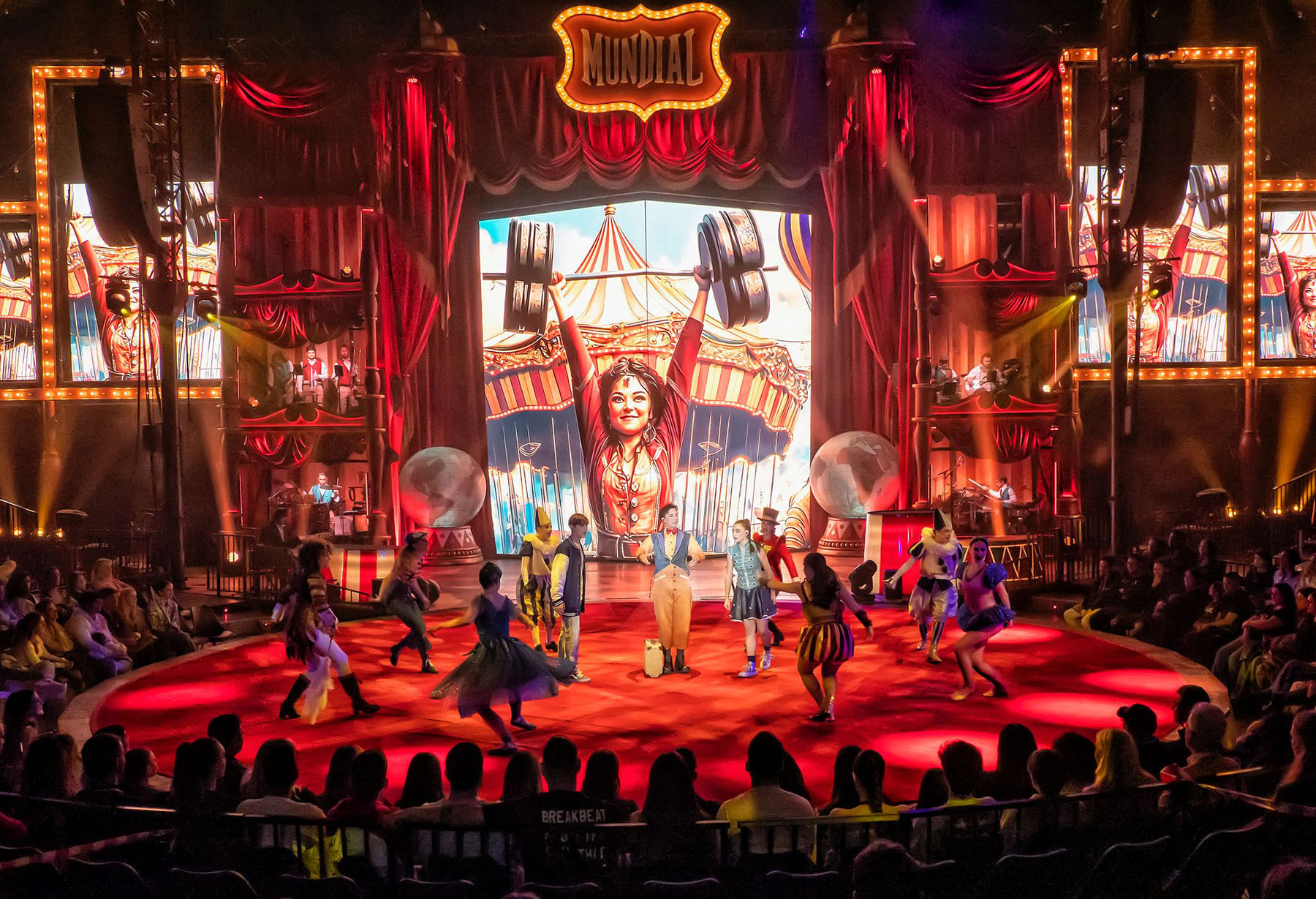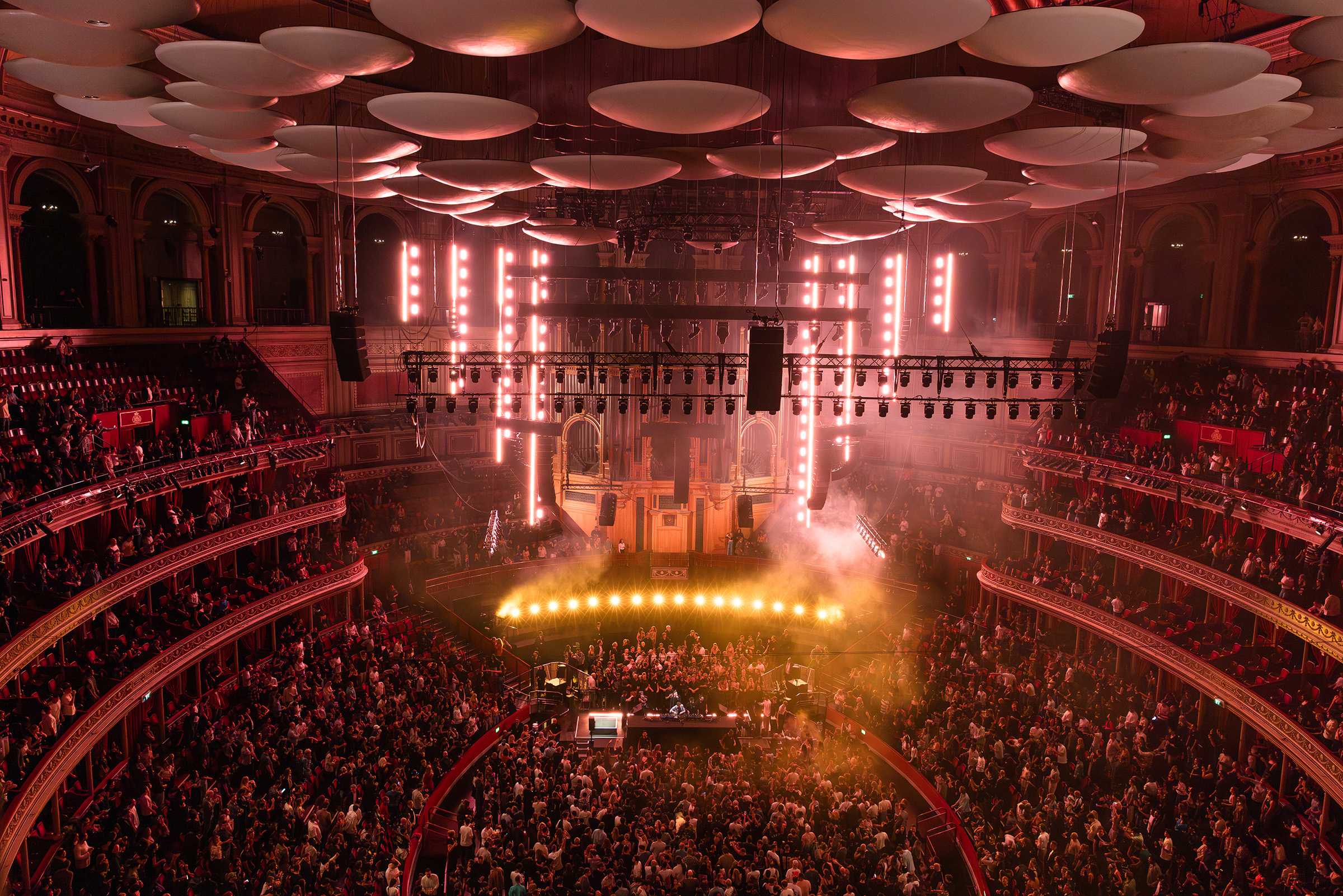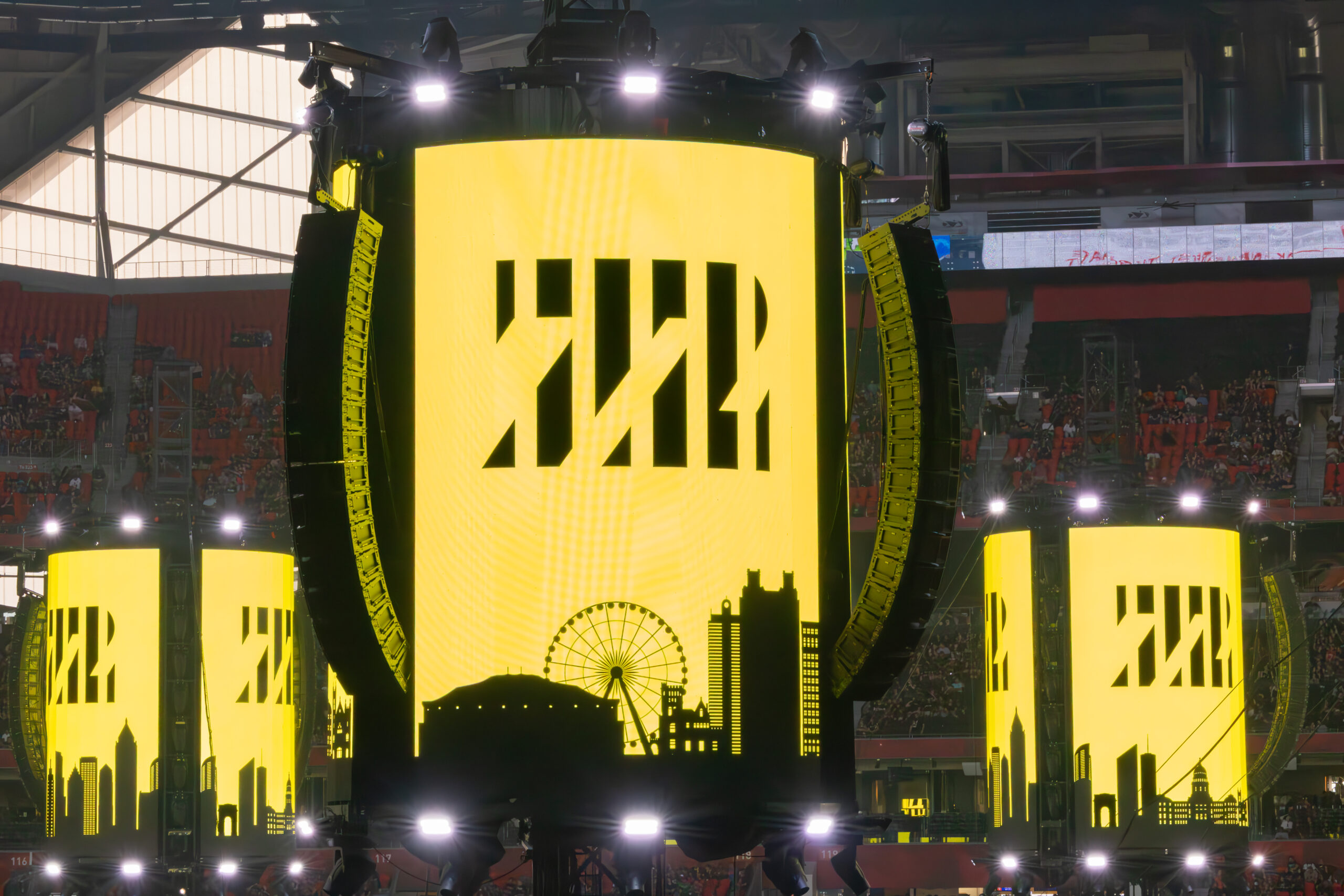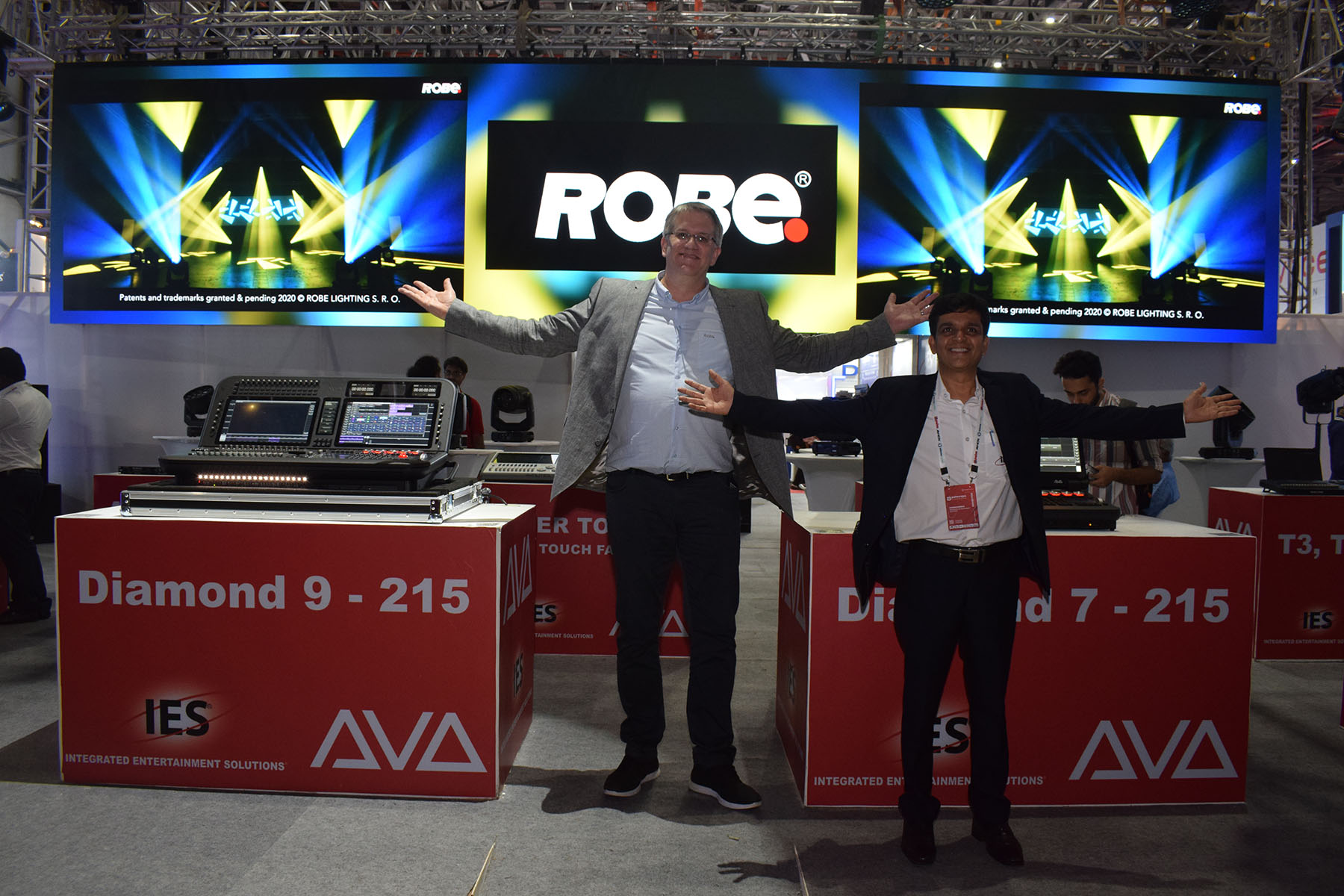MACAU — The City of Dreams entertainment and casino resort features four hotels, a 1,700-seat theatre and a casino with 430,000 square feet of gaming space. The complex also features an immersive experience called The Bubble, a dome-shaped projection space featuring a 10-minute show called Dragon’s Treasure. The show’s lighting designers and programmers made use of Prelite to previsualize the show, which depicts four Dragon Kings who take visitors on an imaginative journey with the help of 15 blended video projectors to create one high-resolution surround-projected environment working in concert with a 52-channel audio system within the 65-foot-by-99-foot elliptically-shaped dome theatre.
“The City of Dreams Casino wanted a signature attraction that could help distinguish itself from the competition,” said principle lighting designer Norm Schwab of Lightswitch. “A new type of theatrical space was invented for the project, one that included a 360-degree space where a story could be told that blurred the lines and exploded on all sides of the audience. The Bubble becomes a magical portal that allows guests to dive down to visit the Jade Palace and visit the dragons, whales, octopus and fantastic creatures in search of the Pearl of Wisdom.
“The creative team strove to design a new entertainment medium where the story could expand beyond two dimensions,” added Schwab. “Video, LEDs, lighting and surround sound combine to create a new experiential venue that blurs the boundaries between the show and the audience.”
To achieve that, Lightswitch layered 10,000 LED pixel points along with small and large strobes, moving lights and larger LED fixtures within and behind the perforated dome. In addition, several moving elements are able to penetrate the audience area through portals, including jellyfish and coral, some of which house elaborate water screens. RGB and white LED systems are controlled via video pixel mapping, as are other lighting system elements, which allow the lighting to synch with the video media sources.
Lightswitch worked with their partners at Ptarmigan Consulting to design the control system that’s both DMX- and video-driven. Several types of custom LED fixtures were created with Lighting Science Group, including in-ground wash and spots, IP68 linear water fixtures and effects lighting that adapted to moving LN2 nozzles.
The show’s climax was designed with Excitement Technologies using RGB solid-state lasers. “These effects were used sparingly,” Schwab said, “but they created a jaw-dropping moment as a giant pearl floated out of the dome and was propelled up with incredible beams of light and whirling Lumia (laser) patterns.”
He points out that “previsualization programming done in Orlando, Florida with Prelite helped everyone understand the design and cueing before they arrived onsite. The entire production — lighting, video and moving scenic effects — was manipulated within a virtual 3D environment through the actual lighting consoles.”
{mospagebreak}
Prelite began working on the project in December 2007 when it started testing its previz theories. “It was fairly overwhelming at the onset, approximately 17,000 point source LEDs, 100 moving lights, moving scenery, video mapped to a large dome, 60 Atomic strobes and more than 600 Selador X7s,” said Prelite partner Thomas Thompson.
“Rodd McLaughlin (another Prelite partner) and I discussed some options and devised a way to handle the nearly 10K LEDs in the dome and the video projected onto the dome,” he continues. “We used an Mbox Extreme media server as a realtime compositor thanks to its cut-and-stencil capability and the fact that any computation done prior to image capture would allow for closer to realtime visualization.
“We structured three layers in Mbox,” Thompson said. “Layer one was the dome video, layer two a stencil of the LED positions and layer three the content running over the LEDs from the Hippotizer media server for the show. The content from the Hippo was run through the Image Pro to conform to the SDI capture requirement of the Mbox.
“The idea behind this was to determine which pixels of the video were projected onto specific parts of the dome’s surface and to learn the position of each LED point source,” Thompson continued. “Then the mapping of the video and the point sources as they related to the dome could be previsualized.”
In addition, 612 Selador X7 LED strip lights with seven-color mixing surround the interior of the dome arranged in rings to light the lower dome and the higher parts of the structure. Prelite set up this configuration in WYSIWYG visualization software projecting onto a simple circular surface.
“We used WYSIWG due to the speed of the low-rez beam,” Thompson said. “We then did a realtime capture of the WYG file on the second channel of the Image Pro and switched it to the Mbox so the image would appear on the dome as if it were using the real fixtures. We were trying to achieve realtime programming with an extremely high number — and variety — of fixtures. No visualizer or hardware configuration could do this on its own.”
Schwab and the producers programmed some moves with the jellyfish and coral scenic elements and sent animations of the results to FTSI (Fisher Technical Services, Inc,) in Macau to replicate. “Very little of the programming could have been done on site because the theater was still under construction,” Thompson noted.
{mospagebreak}
Schwab had the animation company Amalgamated Pixel create positive and negative masks of the key dragon and carp characters in the video. “We were then able to put these into the Hippotizer and create spectacular effects on the LEDs that layered with the video,” Schwab said. “Being able to see these in Prelite and confirm that they would work saved us days of onsite time and gave the creative producers great confidence in our ability to carry out their vision.”
Due to the large size of the dome and the need for high resolution, Prelite opted to use Datapath VisionRGB EX1 capture cards for the dome. “We bought these last summer and implemented them in our testing routine,” Thompson said. “There was a frame rate problem in the beginning, but when we alerted Datapath they did a few rounds of their own tests and wrote a new driver to work with the Vision visualizer.”
Greg Jesse and Dedrick Duckett at ESP created some custom fixtures for Prelite, addressed some software bugs ahead of schedule (most notably the adjustable FOV, which was used to visualize the interior of the dome), and expanded the number of ArtNet universes read by Vision. They also released the grandMA 6.0 driver, used for programming the lighting and media for the show on grandMA2 consoles.
CAST Software, creator of WYSIWYG, helped by providing a new Selador X7 file with new DMX mapping in short order.
Prelite also interfaced with Amalgamated Pixel, the dome’s content creators, to craft a version of the show that could be accurately mapped to the dome.
Prelite host Mike Robertson “did a great job keeping everything together” during the extensive previsualization process, Thompson said. “He ran an Mbox and scenery on a grandMA, looked after two Vision systems and a WYG system, did screen-capture videos of the systems with a third Datapath card and made lattes for everyone.”
As part of a City of Dreams documentary, a team from the Discovery Channel taped the previz process at Prelite.
{mospagebreak}
“The Dragon’s Treasure has quickly become a big draw for the City of Dreams bringing thousands of people to the casino every day to see the show,” Schwab said. “People react to the story, the action, the media and lighting effects with gasps, applause and looks of astonishment. Now that the system has been created we plan to use it for other projects within The Bubble.”
Lightswitch was also involved in other areas of the casino, including the West Entrance and exterior lighting for The Bubble and the Virtual Aquarium, which acts as the main entrance to the casino. At the latter, projected mermaids interact with guests from within a curved acrylic environment with water streaming down the front. Lighting plays in synch with the media splashing complementary colors over coves and the main chandelier.
At Lightswitch, Glenn Wade was systems and installation supervisor, Bryan Barancik and Sarah Jakubasz assistant lighting designers, Seth Rapaport lighting programmer, Cory Fitzgerald media programmer and Jason Goldenberg control system designer.
Geoff Benham was executive producer at Melco Entertainment. JuliAnn Blam was executive vice president/show producer for Falcon’s Treehouse, the creative producers. Ptarmigan Consulting Ltd. was the control and systems integrator and Excitement Technology the laser system designer and system supplier.
For more information, visit www.prelite.com.



